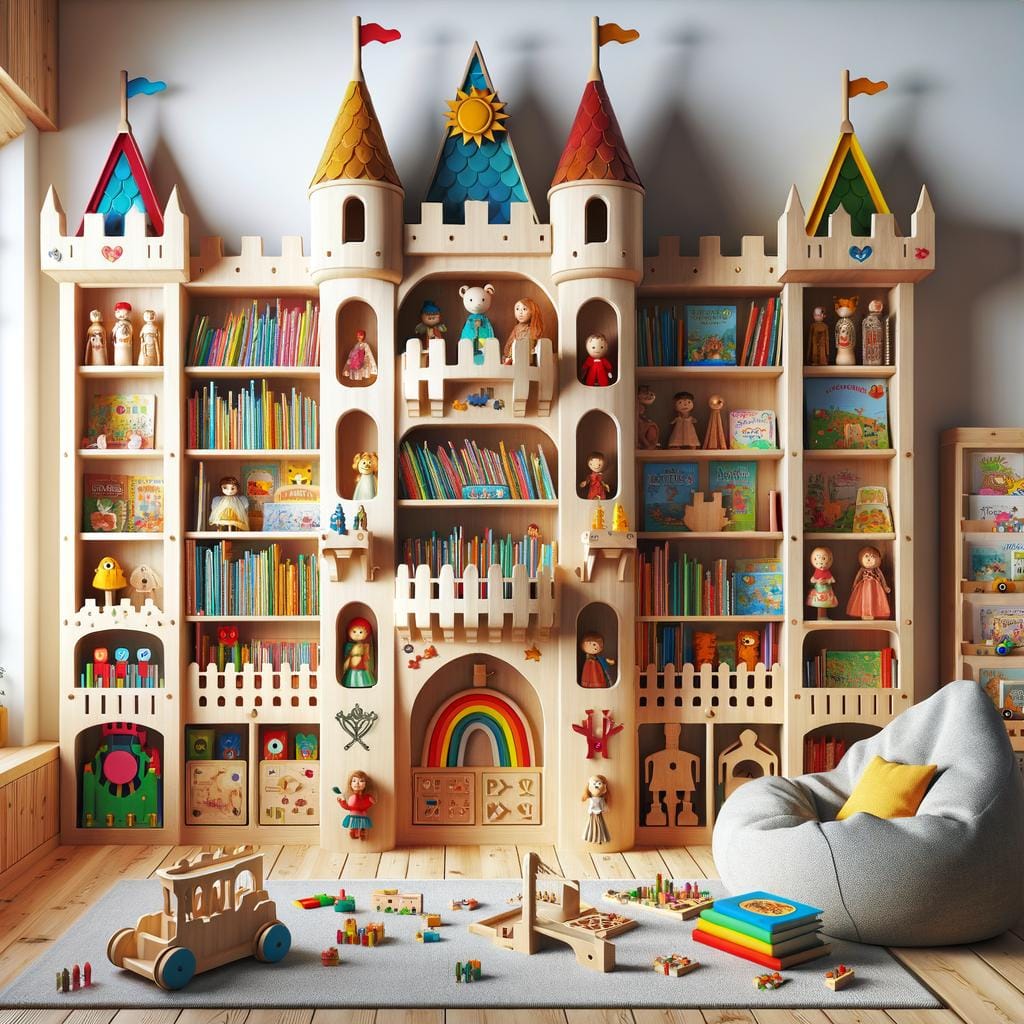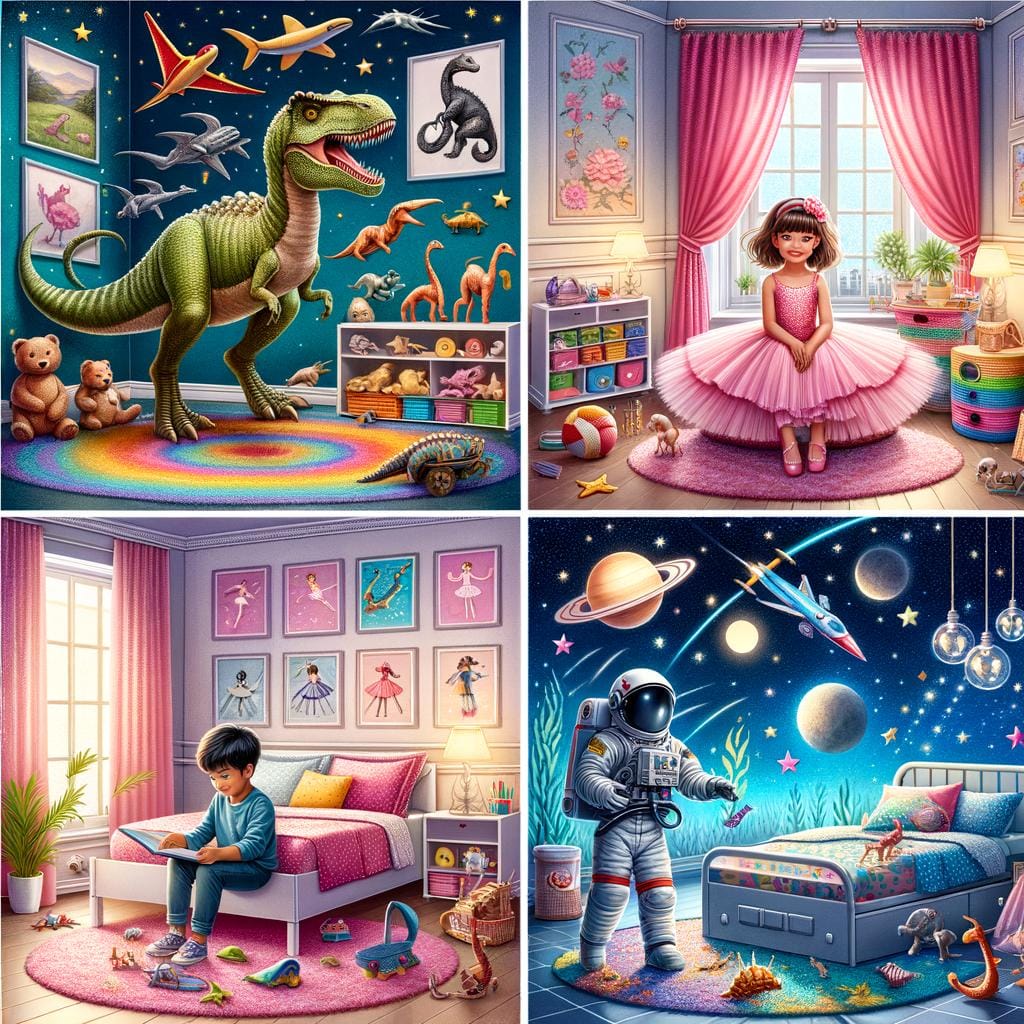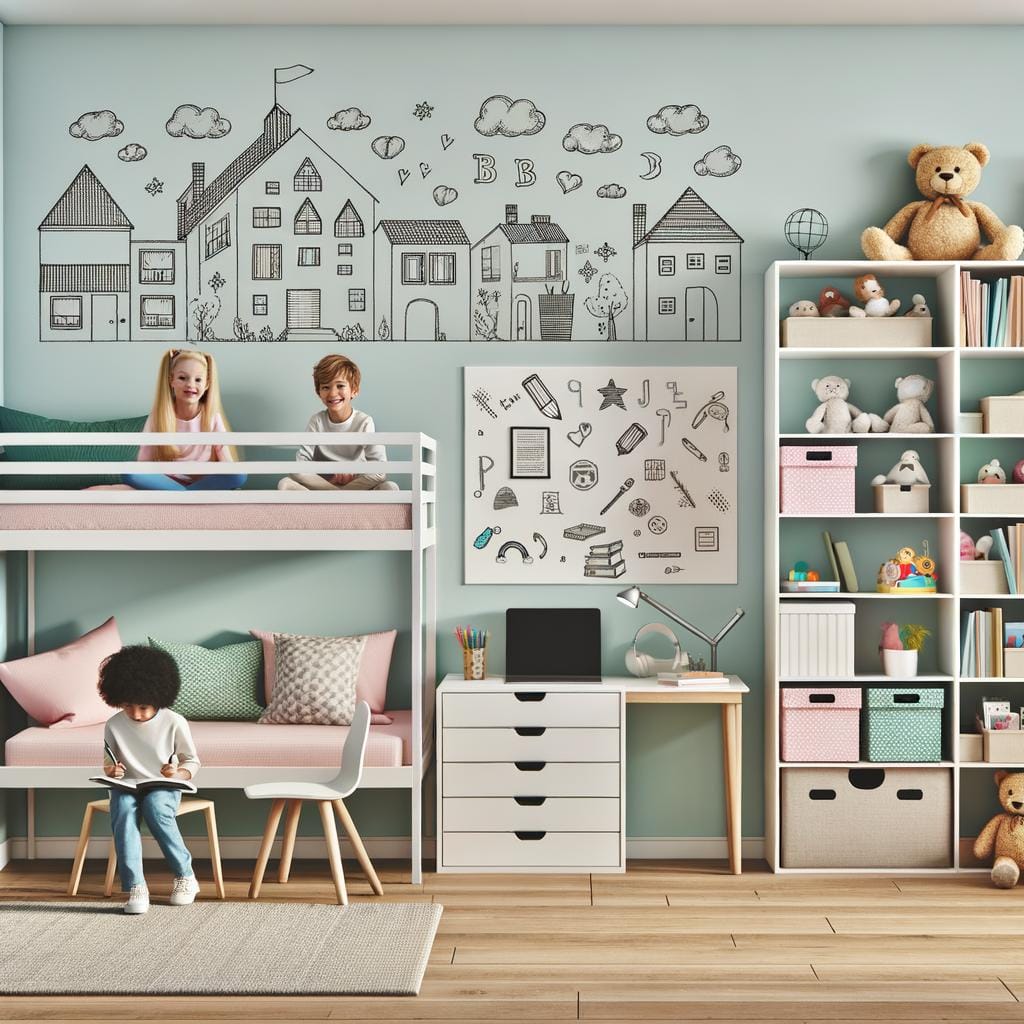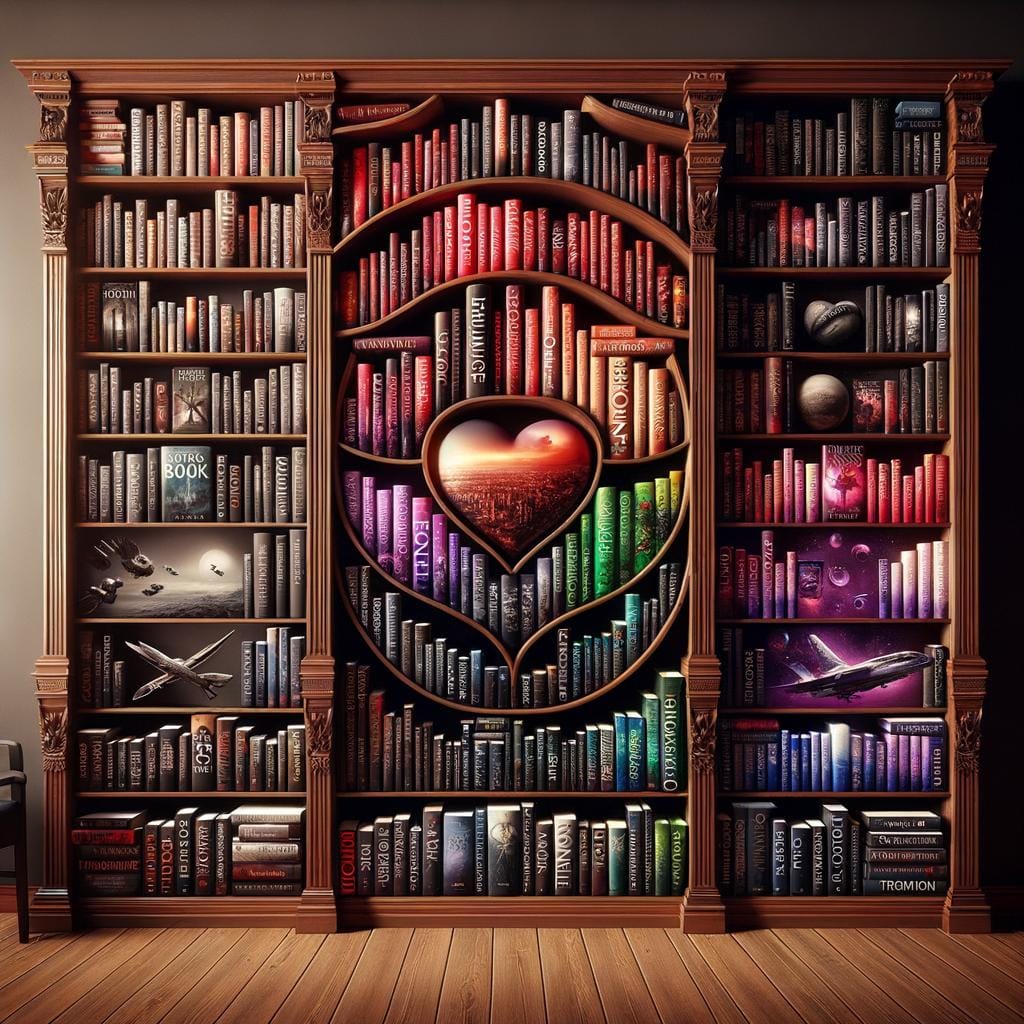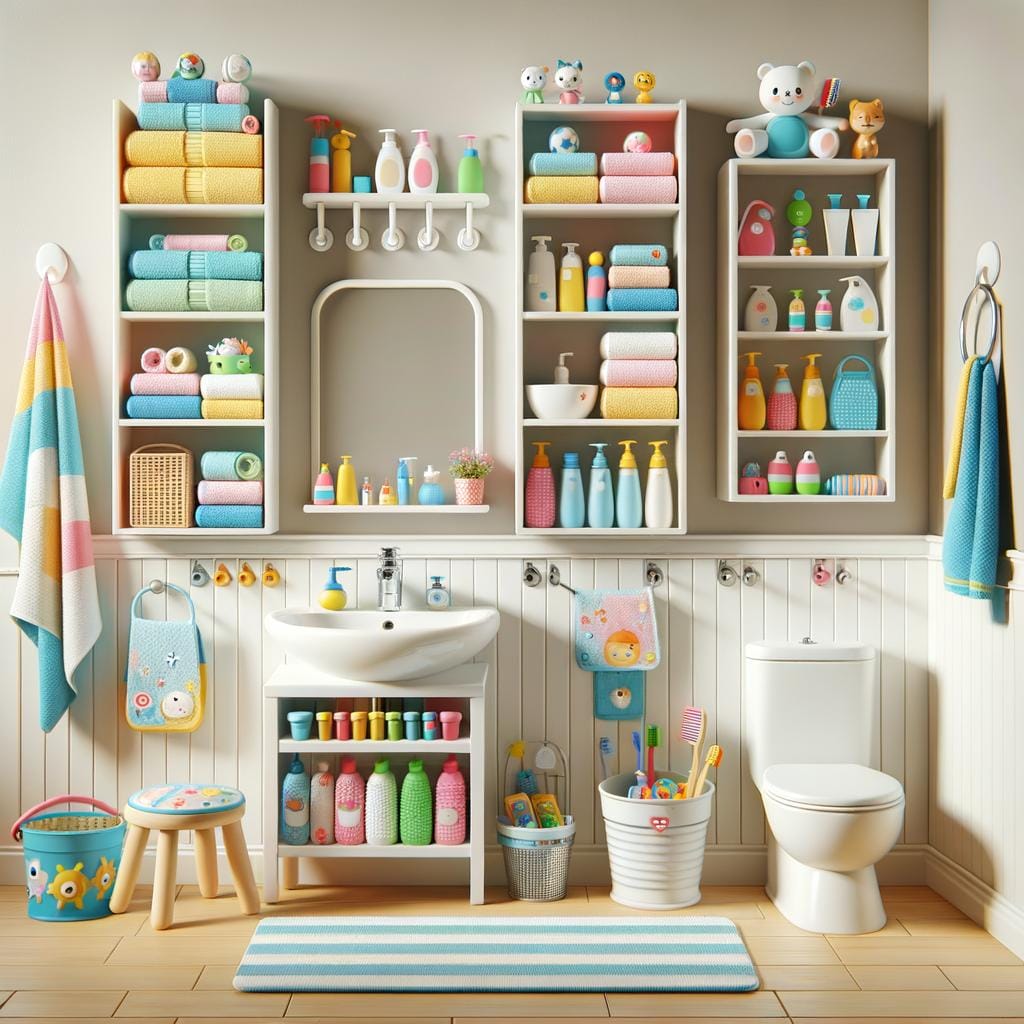Having a designated bookshelf in a child’s bedroom can be a wonderful way to cultivate their love for reading and encourage organization skills from an early age. In this article, we will explore various creative and fun bookshelf ideas for kids that not only serve as storage solutions but also add charm and personality to their rooms.
From DIY projects to budget-friendly options, we will provide inspiration for maximizing space and creating an inviting reading nook for your little ones.
A well-organized bookshelf can not only showcase a child’s favorite books but also serve as a focal point in their room, sparking imagination and creativity. By incorporating unique and playful designs, such as themed bookshelves or interactive displays, kids can feel excited about their personal library. Additionally, ensuring that the books are easily accessible can further promote independent reading habits and foster a lifelong love for learning.
Whether you have limited space or are looking to share a room among siblings, there are plenty of clever bookshelf ideas that cater to different room layouts and individual preferences. By selecting the right accessories, organizing books effectively, and setting up safety measures, parents can create an engaging environment where kids are encouraged to explore the world of literature at their own pace.
Stay tuned as we delve into various aspects of creating the perfect bookshelf setup for kids of all ages.
Creative and Fun Bookshelf Designs for Kids’ Bedrooms
A well-designed bookshelf can not only provide storage for children’s books but also add a touch of creativity and fun to their bedrooms. When choosing a bookshelf for kids, consider designs that are not only functional but also visually appealing to encourage children to engage with their books. Here are some creative and fun bookshelf ideas for kids‘ bedrooms:
- Tree-shaped Bookshelves: Transform a corner of your child’s bedroom into a magical reading nook with a tree-shaped bookshelf. This whimsical design adds a playful element to the room while providing ample storage space for books.
- Colorful Wall-mounted Shelves: Bright and colorful wall-mounted shelves can make organizing books fun for kids. Choose shelves in different shapes and sizes to create an eye-catching display that will inspire your child to explore their collection.
- Bookcase with Built-in Reading Nook: Opt for a bookcase that comes with a built-in reading nook or seating area. This design not only encourages children to read but also provides them with a cozy spot to escape into the world of their favorite stories.
Incorporating these creative and fun bookshelf designs into your child’s bedroom can help foster a love for reading from an early age. By making the bookshelf visually appealing and accessible, you can create a space where your child feels inspired and excited to explore the wonderful world of books.
Whether you choose a tree-shaped bookshelf, colorful wall-mounted shelves, or a bookcase with a built-in reading nook, remember to involve your child in the process of selecting and arranging their books on the shelves. By creating a personalized and engaging reading environment, you can instill a lifelong passion for stories and imagination in your little one.
DIY Bookshelf Ideas for Kids’ Rooms
For parents looking to add a personal touch to their children’s bedrooms while also encouraging a love for reading, DIY bookshelves are the perfect solution. Not only do DIY projects allow you to customize the design and size of the bookshelf to fit your space, but they also create a sense of pride and accomplishment for both you and your child.
One popular DIY bookshelf idea for kids’ rooms is repurposing old wooden crates or drawers into charming and practical storage solutions for books.
Another creative DIY bookshelf idea for kids’ rooms is utilizing rain gutters as bookshelves. By securely attaching rain gutters to the walls at a low height, children can easily access their favorite books while adding a whimsical element to the room decor. This budget-friendly option not only enhances the visual appeal of the space but also encourages little ones to engage with their books in a playful way.
Additionally, incorporating floating shelves into your child’s bedroom can provide a sleek and modern look while maximizing storage space. These simple yet stylish shelves can be easily installed using basic tools and materials, allowing you to display an array of colorful books that catch your child’s eye. Whether you opt for repurposed materials or contemporary designs, DIY bookshelf ideas for kids‘ rooms offer endless opportunities for creativity and functionality.
Bookshelf Organization Tips for Children’s Books
Organizing children’s books can be a challenging task, especially when they tend to accumulate quickly. However, with the right strategies in place, maintaining a tidy and functional bookshelf for kids is achievable. Here are some helpful tips for organizing children’s books effectively:
Sort by Category or Theme
One practical way to organize children’s books is by sorting them by category or theme. This approach not only helps kids easily locate their favorite books but also adds a fun element to the bookshelf. You can create sections for different genres like science fiction, fantasy, animals, or adventure. Alternatively, you can organize books based on themes like bedtime stories, educational reads, or seasonal books.
Use Labels or Tags
Labels or tags can be a great aid in keeping children’s books organized. Consider using colorful labels with pictures or icons that represent each category or theme of books. This visual cue can help kids remember where each book belongs and encourage them to put them back in the same spot after reading.
Rotate Books Regularly
To keep kids engaged and interested in their book collection, consider rotating their books regularly. You can switch out old favorites with new additions or seasonal reads to keep the bookshelf dynamic and appealing. Encouraging kids to participate in choosing which books to rotate can also make the process more interactive and enjoyable for them.
By implementing these organization tips for children’s books on their bookshelves, parents can instill good habits of tidiness and foster a love for reading in their little ones. A well-organized bookshelf not only enhances the visual appeal of a child’s room but also makes it easier for kids to find and enjoy their beloved stories anytime they please.
The Best Bookshelf Accessories for Kids
One of the best ways to enhance a child’s bookshelf and make it more appealing is by adding fun and functional accessories. These accessories not only help in organizing books but also add a touch of personality to the space. One popular bookshelf accessory for kids is themed bookends. Whether it’s shaped like animals, cars, or even favorite characters from books, these bookends not only keep books upright but also make the bookshelf more visually interesting.
Another great accessory to consider for a kid’s bookshelf is reading lamps. Providing adequate lighting can make reading more comfortable for children and encourage them to spend more time with their books.
Look for adjustable or colorful lamps that can match the theme of the room or simply add a pop of color to the bookshelf. Additionally, incorporating cozy seating options like bean bags or cushions near the bookshelf can create a cozy reading nook where kids can relax with their favorite stories.
Incorporating storage baskets or bins on the lower shelves of a kid’s bookshelf can help keep toys, art supplies, or any other items organized while leaving space dedicated solely to books on higher shelves. These storage options not only help in maintaining a clutter-free environment but also teach children about tidying up after themselves.
When choosing accessories for a kid’s bookshelf, always prioritize safety by ensuring that all decorations are securely attached and do not pose any hazard to curious little hands. By adding these thoughtful touches to a kid’s bookshelf, you can transform it into an inviting and personalized space that encourages a love for reading.
Bookshelf Ideas for Small Spaces or Shared Rooms
When it comes to bookshelf ideas for kids in small spaces or shared rooms, creativity and maximizing space are key. One clever idea is to utilize vertical space by installing floating shelves that go all the way up to the ceiling.
This not only creates more storage for books but also draws the eye upward, making the room feel bigger and more spacious. Additionally, wall-mounted bookshelves can free up valuable floor space, allowing for other furniture or play areas in a cramped room.
Another innovative option for small spaces is utilizing multi-functional furniture pieces that incorporate book storage. For example, a bed with built-in bookshelves in the headboard or drawers that double as book bins can save space and keep books organized. You can also repurpose everyday items like wooden crates, spice racks, or even rain gutters into unique book display shelves that don’t take up much room.
In shared rooms where siblings have to coexist with limited space, consider using adjustable bookshelves or ones with multiple tiers that can be customized to fit each child’s needs. Creating designated areas for each child’s books will not only help prevent mix-ups but also encourage a sense of ownership and responsibility over their personal library.
Ultimately, when dealing with small spaces or shared rooms, it’s all about thinking outside the box and finding creative solutions to make the most of every inch available while still keeping the room functional and appealing for kids.
| Bookshelf Ideas | Small Spaces/Shared Rooms |
|---|---|
| Vertical Floating Shelves | Create more storage and maximize space |
| Multi-functional Furniture Pieces | Bed with built-in bookshelves or drawers for dual purpose |
| Adjustable Bookshelves | Customizable tiers for each child’s needs in shared rooms |
How to Encourage Kids to Use and Maintain Their Bookshelves
Encouraging kids to use and maintain their bookshelves is crucial in fostering a love for reading and organization skills. Here are some practical tips to help instill good habits in children when it comes to their bookshelves:
- Lead by Example: Show your kids the importance of organizing by keeping your own books and belongings tidy. Let them see you using your own bookshelf regularly.
- Make It Fun: Create a reward system for children who consistently use and maintain their bookshelves. Offer small incentives or praise to motivate them.
- Involve Them in the Process: Allow kids to take ownership of their bookshelf by letting them choose how they want to organize their books. This will make them more likely to keep it organized.
Additionally, setting a regular cleaning and organizing schedule for the bookshelf can help kids develop a routine when it comes to tidying up their space. Encourage them to dust off the shelves, rearrange books, and remove any items that don’t belong there.
Remember that consistency is key in teaching children good habits. By creating a positive and engaging environment around their bookshelf, kids will be more inclined to use it regularly and take pride in maintaining its organization. A well-kept and personalized bookshelf can not only enhance the look of their room but also promote a sense of responsibility and ownership over their belongings.
Budget-Friendly Bookshelf Options for Kids’ Rooms
When it comes to setting up a bookshelf for kids, there are plenty of budget-friendly options available that can still be stylish and functional. One popular choice is the classic wall-mounted bookshelves, which are not only cost-effective but also don’t take up much space in the room. These bookshelves are perfect for displaying your child’s favorite books and can easily be installed at any height to make them accessible for little readers.
Another great budget-friendly bookshelf option for kids’ rooms is repurposing old furniture into book storage. You can transform a simple ladder into a trendy book display or use wooden crates as open shelves for organizing books.
Not only is this a creative way to add character to the room, but it also saves money on purchasing new bookshelves. Thrift stores and online marketplaces are great places to find affordable furniture pieces that can be upcycled into unique book storage solutions.
If you’re looking for an inexpensive yet versatile bookshelf idea for kids, consider using floating shelves. These shelves are easy to install, adjustable in height, and come in various sizes and colors to match any decor.
Floating shelves create a modern look in the room while providing ample space for storing books and other small treasures. Additionally, these shelves allow you to change the layout of the books easily, making it fun for kids to personalize their reading nook with their favorite titles.
| Bookshelf Option | Description |
|---|---|
| Wall-Mounted Bookshelves | Cost-effective, space-saving, adjustable height. |
| Repurposed Furniture | Create unique displays using old furniture pieces. |
| Floating Shelves | Inexpensive, modern look, versatile. |
Bookshelf Safety Tips for Children’s Rooms
Anchoring Bookshelves to Walls
When it comes to bookshelf safety in children’s rooms, one of the most important steps is to secure them to the walls. Children are curious and may try to climb or pull on bookshelves, which can lead to tipping over. Use wall anchors or furniture straps to securely attach bookcases to the wall. Make sure to follow the manufacturer’s instructions for proper installation.
Choosing Child-Friendly Materials
Selecting bookshelves made from child-friendly materials is essential for ensuring safety in kids’ rooms. Opt for sturdy and durable materials like solid wood or metal that can withstand the wear and tear of active children. Avoid shelves with sharp edges or corners that could potentially cause injuries. Additionally, look for non-toxic finishes that are safe for children.
Organizing Books Safely
Properly organizing books on kids’ bookshelves is crucial not only for easy access but also for safety. Keep heavier books on lower shelves to prevent toppling over. Store lighter books and toys on higher shelves where children cannot reach easily. Use bookends or baskets to keep smaller items organized and prevent them from falling off the shelf. Regularly check and adjust the organization of books to maintain a safe environment for children in their rooms.
Conclusion
In conclusion, cultivating a love for reading in children can be greatly facilitated by implementing unique and engaging bookshelf ideas in their bedrooms or play spaces. By providing a designated area for their books that is not only functional but also visually appealing, kids are more likely to be drawn to their collection and develop a sense of ownership over their literary treasures.
From creative and fun designs to DIY options and budget-friendly choices, the possibilities for enhancing a child’s reading nook are endless. By incorporating themes or colors that resonate with the child’s interests, such as using bookshelves shaped like trees or incorporating favorite characters, parents can make the reading corner a place of joy and inspiration.
Furthermore, instilling good organization habits and safety measures when it comes to maintaining the bookshelf will not only keep the space tidy but also ensure that children can enjoy their books safely. Encouraging kids to take pride in curating their own library by involving them in the selection of books and decor elements will foster a sense of responsibility and appreciation for literature.
With these tips and tricks, parents can create an environment where reading becomes not just a habit, but a cherished pastime for children from an early age.

Hello, I’m April Denton, your go-to expert for all things home decluttering and organization. With over a decade of experience helping individuals transform their living spaces into serene, clutter-free sanctuaries, I am passionate about the life-changing benefits of decluttering. My journey into the world of organization began out of necessity, juggling a busy career and a bustling household. I quickly realized that a well-organized home was the key to a more balanced, stress-free life.

